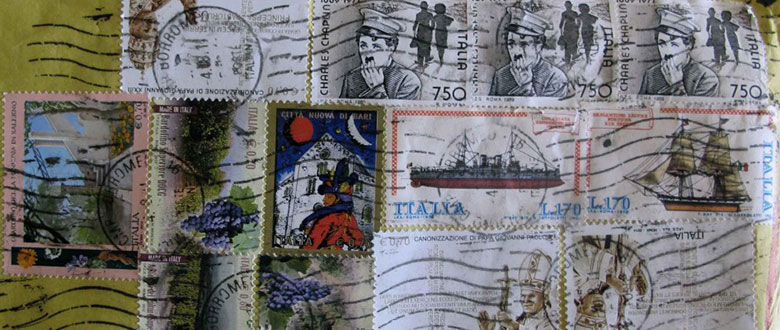Where to find inspiration
All around you. A writer should always be on the look out for a story. You only have to keep your eyes, ears and mind open to all that is around you, to find something to inspire you – to set you off on a path of discovery through your writing.
‘Write about what you know’ is often quoted as good advice to a writer or wannabe writer. But it’s important to continue adding to your wealth of knowledge and experiences; good to seek out new things to do and new ideas to write about. You may not have to go very far either. They may be right on your doorstep, right under your nose, for all you know.
- go shopping at midnight at your 24hr supermarket – who is working that shift? how do they feel? who is shopping at this tim
- visit your local magistrates’ court and sit in on some cases/trials – how is the place run? who does what there? what sort of cases are being heard?
- take a close look at the noticeboard in your library or community hall – every notice has a story to tell and also valuable contact details are usually given
- pop into the local museum you walk past every day but never go in – who works there? what unusual or interesting exhibits are there?
- say hello to the owners of the new business just opened on the High Street – what’s their background? how is the recession affecting them?
- how about some serendipitous searches – visit places or streets with unusual or strange names – I live not far from Labour-in-Vain Hill, Honeystreet, the Shambles, New Zealand, Tiddleywink, Knook, Cuckoo’s Knob and Fugglestone. what’s the place like? what’s the origin of the name? what do locals think about their address?
What to do?
Watch, listen, enquire, record, store, absorb, reflect, retrieve, transform, create, edit, publish.
Why not set yourself the Ten Miles from Home challenge?
See what you can find to inspire you in your writing within a ten-mile (rural), five-mile (town) or one-mile (city) radius from home.
Read Dee’s Ten Miles from Home Diary
Maybe you are travelling somewhere further afield. To work, to shop or to visit friends or relatives. Treat each journey as a new adventure. See your surroundings in a new light. Pay attention to the little details. Look above eye level at the buildings you pass. See the variety of brick and stone work, windows and chimneys, plaques and signs. Look down at the ground beneath your feet. The changing surfaces of road and pavement, of earth and grass; litter and debris and shoes passing by.
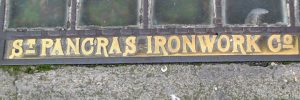
I came across this art nouveau beauty in Milsom Street, Bath on the pavement outside Jaegers. I have used it in my novel-in-progress Bath Buns and Short Togas (34,000 words & struggling). My hero is an architectural photographer interested in recording unusual features of Bath’s historic buildings. He loves looking at man-hole covers and drools over this discovery beneath his feet. What about this one – also in Bath?
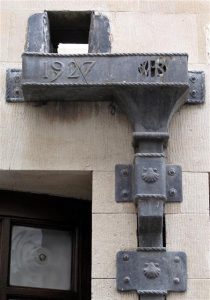
I don’t know what I’ll do with this picture of the lead rain-water pipe. It’s just lovely to look at and to think about the period when it was made and the workmanship which went into it. A triumph of form and function. Some day, it’ll flash across my mind again and inform some writing I’m doing.
Perhaps you’re off on holiday. Don’t look on it as just a break from the daily grind or domestic routine.
Yes, carry a notebook and a camera (vital for a writer to record what s/he sees for reference later) with you at all times but also take your inquisitive and questioning self too wherever you go.
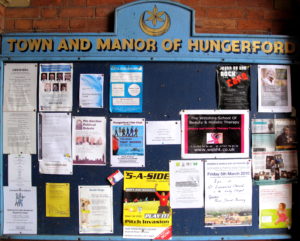
Get off the beaten track. Get away from the main tourist areas. Visit that church or villa not in the guide book. How about a school or factory? Talk to locals. Where do they shop and eat? Use your senses: write down what you hear, what you smell. Note down colours and textures.
Rust on the hull of SS Great Britain
Whether you are writing fiction or non-fiction the starting point is the same: real experiences filtered through your own imagination and sensibilities.
The last thing Keats saw before he died
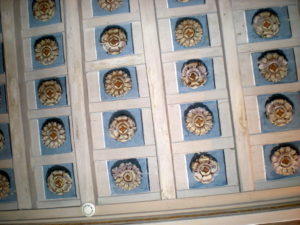
When I looked up at the ceiling in the Keats-Shelley House in Rome, this is what I saw. Words do fail you sometimes when you see something beautiful or extraordinary. It’s important to look and absorb the experience and later reflect on it. Stored away in your mind it may resurface when you least expect it. It might inform, illuminate or illustrate an idea in your writing. Refracted through the lens of your imagination it may become a new thing of beauty.
It was later that I thought about Keats and his friends going about their business in the house, drinking and talking, reading and writing. Was this carved wooden field of flowers one of the last things Keats saw as he lay dying of consumption on his tiny bed in his study overlooking the glorious Spanish Steps?
* * * * *
Those who saw Jane Campion’s film Bright Star (2009) about John Keats’s love affair with Fanny Brawne, will remember a beautiful, albeit brief, scene near the end. The camera pans across an empty Piazza di Spagna as the early morning mist rises and the only sound is the clack-clack of horses’ hooves on cobbles. A funeral carriage is collecting the body of Keats from his lodgings where he has just died of tuberculosis. His body will be taken out of the city, as Vatican law demanded, to be burned along with his furniture, personal possessions and manuscripts.
I have just returned from that place, walking in Keats’s footsteps, standing in his bedroom, looking out onto the Piazza, the Fontana della Barcaccia and the curving sweep of steps up to Trinità dei Monti church. I studied glass cases with Keats’s wax death mask and curls of his burnished-gold hair, searching for the poet within the relic. To wake afresh each morning there, to look out in that special light, breathe that hungry air and walk where Keats once walked is special. Rome in October is a fitting place to be to celebrate the season of mists and mellow fruitfulness. November 2009
View of the Spanish Steps from Keats’s bedroom

